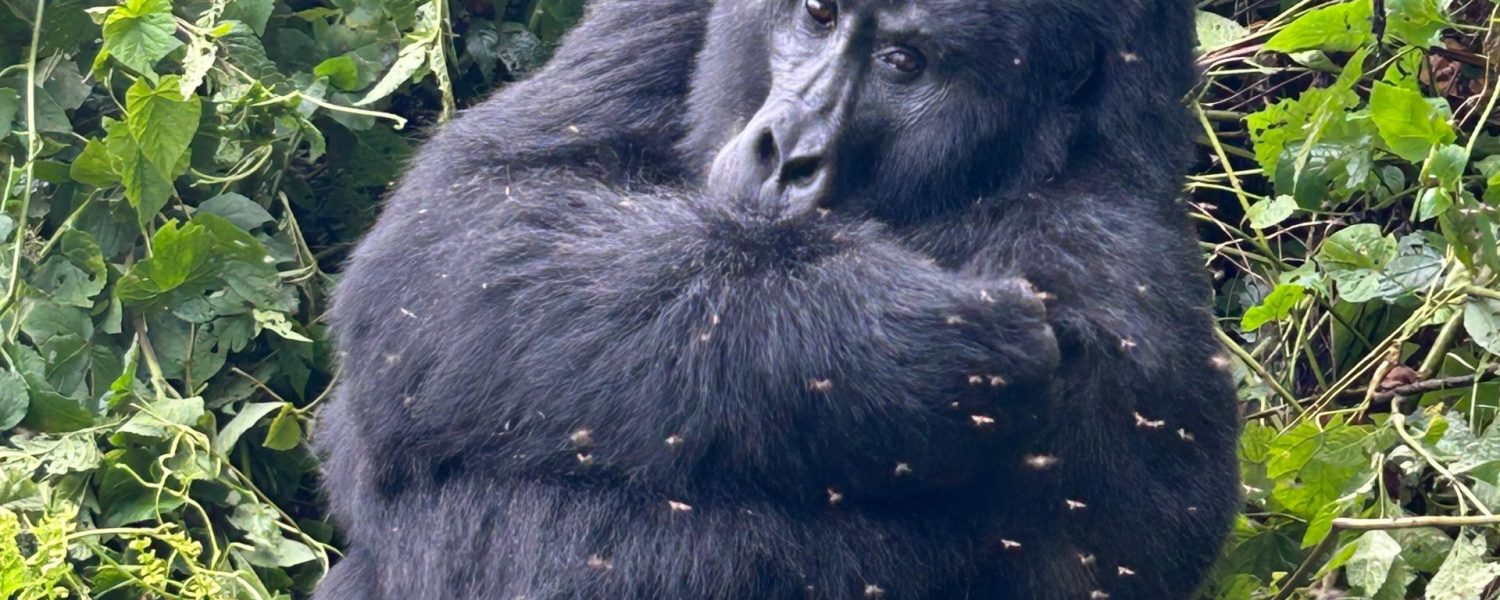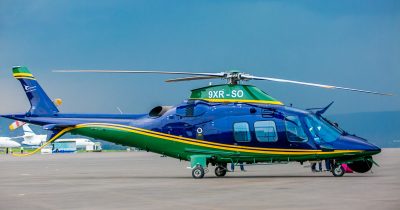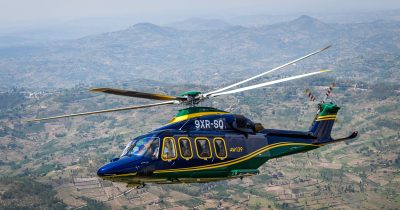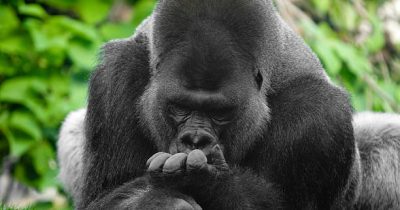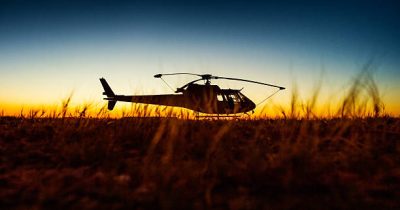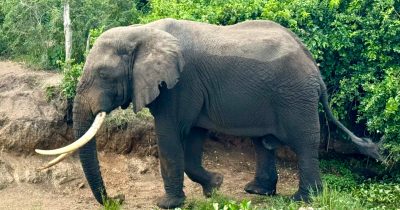Gorilla Trekking in Ruhija
Everything you must know about gorilla trekking in Ruhija. Bwindi is the gorilla trekking Capital of Uganda, with every gorilla trek being a unique experience, and the sightings vary. A typical gorilla trekking adventure may lead you to one of the four trekking sectors, Ruhija, found in the Eastern part of the Park.
If you are interested in spotting the majestic Giant Apes in Bwindi Impenetrable National Park, you should put a Ruhija gorilla trekking tour on your travel itinerary. Located on the Eastern side of the Park, Ruhija is one of the four sectors that make up this stunning safari destination and is one of the most popular places to go gorilla trekking in Uganda.
Ruhija sector has one of the most outstanding landscapes and is the highest point in Bwindi, with an elevation of over 2340 meters above sea level. Hence, it is the most spectacular and ideal location for observing and learning about the endangered mountain gorillas in their natural habitat. This sector was opened in 2008 and boasts an incredible number of habituated gorilla families for tracking and research purposes.
Gorilla Families in Ruhija Sector
Since its formal opening in 2008, the Ruhija sector has welcomed thousands of visitors to meet face-to-face with the majestic Giant Apes in their natural habitat. There are currently four fully habituated gorilla families in the easternmost sector of Bwindi Impenetrable National Park- Kyaguliro, Bitukura, Oruzogo, and Mukiza. Of these, Kyaguliro isn’t trekked by visitors but was rather reserved for research purposes, while the rest are for trekking adventures.
Kyaguliro Gorilla Family
Habituation of this Gorilla family lasted from 1995 to 1999. Since then, this family has been dedicated to research by the Max Planck Institute for Evolutionary Anthropology. This research is mainly focused on the behavioral ecology of the gorilla family. This is in addition to conducting daily monitoring visits. This family was initially referred to as “Rukara Gorilla Family”. It was named after the founding silverback Rukara, who left it to start a new family. The family’s leadership fell on silverback Rukina’s shoulders until 2015, when he died as a result of an electric shock from lightning.
After Rukina’s passing, a naïve young silverback, Mukiza took over leadership of the gorilla family. But it wasn’t long before he got ambushed by an immigrating silverback of the Bitukura Group. In 2016, the Kyaguliro family split into two- the original Kyaguliro and Mukiza. There are currently only 6 members in this gorilla family, and these include 1 silverback, 4 blackbacks, and 1 infant.
Mukiza Gorilla Family
Also known as “Kyaguliro B”, Mukiza was formed in May 2016 following the breakaway from the original family, Kyaguliro. The members of this family spend a lot of their time in the inner forest and very rarely go close to the forest edges. There are currently 19 members in this family: 1 silverback (named Mukiza), 8 adult females, 1 sub-adult female, 2 juveniles, and 7 infants.
Bitukura Gorilla Family
The habituation of this gorilla family began in 2006 with Ndahura as the dominant silverback, but following his passing in December 2016 after a fall from a tree, he was replaced by silverback Mugisha. One of the qualities that makes this gorilla family stand out and worth visiting is its multi-male tolerance level, with over 5 adult males at a time. There are currently 13 members in this family, including 2 silverbacks, 4 adult females, 1 sub-adult male, 2 blackbacks, 2 juveniles, and 2 infants.
Oruzogo Gorilla Family
This gorilla family is known for foraging in an area dominated by “Alchornea hirtella”, locally known as “Oruzogo”, hence its name. The fact that they feed on this plant species makes this gorilla family exceptional that other gorilla families that don’t enjoy it. Habituation of this family began in 2008 with over 17 members, but a flight happened, leading to silverback Kasimali leaving the group with several members. There are currently 11 members that include 1 silverback (named Kaganga), 2 adult females, 6 blackbacks, 1 juvenile, and 1 infant. With the three gorilla families that are open for Ruhija gorilla trekking, a total of 24 gorilla permits are issued each day by Uganda Wildlife Authority.
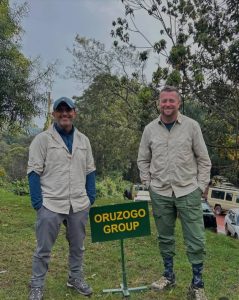
Best Ruhija gorilla trekking season
When is the best time to go gorilla trekking in the Ruhija sector of Bwindi Impenetrable National Park? This is one of the commonest questions for primate enthusiasts and tourists alike who are eager to experience the once-in-a-lifetime opportunity of seeing the endangered mountain gorillas in their natural habitat.
Whether you are a seasoned gorilla trekker or simply curious about these majestic creatures, understanding the best time to go gorilla trekking can greatly enhance your experience. The best time to see these primates in the Ruhija sector is “year-round.”
So, what determined a good Ruhija gorilla trekking season? Well, it all comes down to trekking conditions, which have a significant impact on your overall trekking experience.
During the dry season, precipitation levels reduce, which makes forest trails drier and more comfortable to explore while searching for the mountain gorillas in their natural habitat. This season provides excellent trekking conditions for gorilla trekking experiences. However, the dry months (June to September and December to February) come with challenges, which include limited accommodation and gorilla permit availability, as well as the high cost of gorilla tours (since most lodges charge high-season rates).
If you opt for Ruhija gorilla trekking in the wet season, you will experience heavy downpours (especially in the afternoons), hence muddy and uncomfortable forest trails. The advantages of this reason include the possibility of enjoying discounted rates (especially on accommodation), as some lodges offer low-season rates. Also, there are fewer visitors during the low season, hence offering the feeling of having the National Park and lodge to yourself.
Where to stay during Ruhija gorilla trekking
Some of the accommodation options to choose from during Ruhija gorilla trekking include the luxurious Kiho Gorilla Safari Lodge, Agandi Uganda Eco-lodge, Bakiga Lodge, Broadbill Forest Camp, Gorilla Mist Camp, Ruhija Gorilla Lodge, and Trekkers Tavern Cottages.
Ruhija sector is one hour’s drive from Buhoma sector, hence making it possible for visitors to stay at Buhoma sector while enjoying Ruhija gorilla trekking. The accommodation options include Buhoma Lodge, Sanctuary Gorilla Forest Camp, Bwindi Lodge, Mahogany Springs, Ride 4 a woman Guesthouse, Engagi Lodge, Silverback Lodge, Trackers Safari Lodge, Buhoma Community Rest Camp, and many others.
How to get to the Ruhija sector of Bwindi Impenetrable National Park
If you are gearing up for a memorable journey to a mountain gorilla haven of Ruhija, you are in for a treat. In this article, we’ve crafted a simple guide on how to get to the sector.
Buckle up as we help you navigate through the scenic roads, transportation options, and must-see stops on your way to the Ruhija sector. Our guide is your passport to locating the hidden wonder written by our safari experts at Native Africa Tours.
By air
If you wish to make the journey to the Ruhija sector, the journey typically begins with landing at Entebbe International Airport, offering visitors the convenience of choosing connecting flights to reach Kihihi airstrip by air.
Scenic scheduled flights and charters are available at Entebbe Airport. Aerolink offers both options, and flights provide an exceptional perspective, hence allowing you to witness the jaw-dropping landscapes of Uganda’s countryside from above. The flight is one and a half hours, then you can continue to Ruhija or your Lodge by a two-hour road transfer.
By road
Getting the Ruhija sector for gorilla trekking is like a road adventure. It is approximately 8-9 hours from Entebbe/Kampala, and the route takes you through Masaka, Mbarara, Rukungiri, and Kabale, making the trip as awesome as the destination.
